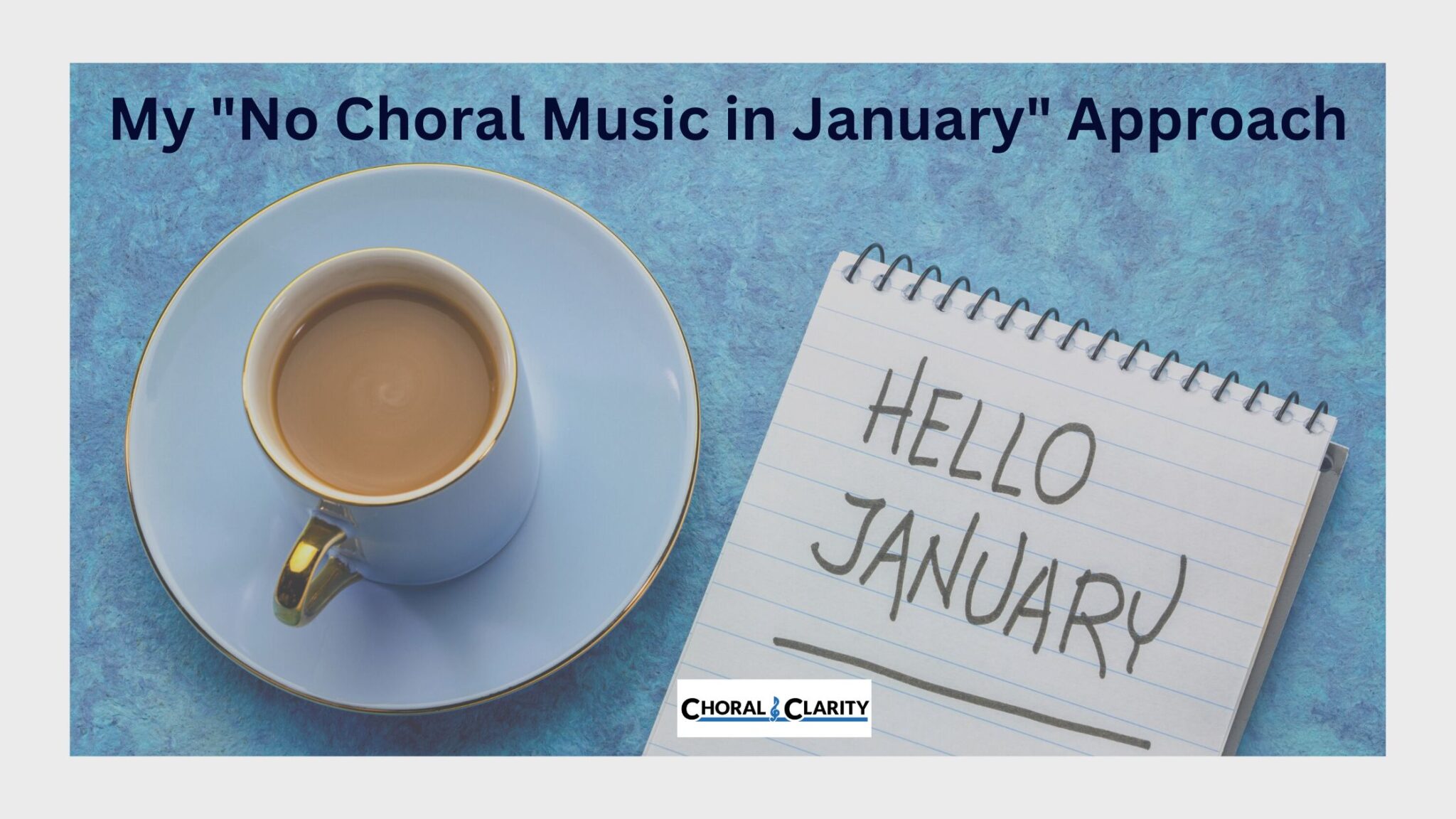Choir New Year Changes……New Year, new you?
Now is an amazing time to make changes now to improve your choral program for the rest of the year, and maybe even for the future of your choral program!
In so many ways, you are starting all over again. Your students just had a long break, finished their concert season, are changing from performance-ready music to new music, etc.
Now is the time to ensure you are utilizing effective Guidelines, Procedures, and a plan to redirect poor behavior.
Now is the time to re-introduce, teach, and positively reinforce an effective classroom management plan.
Now is the time to set expectations for effective rehearsal participation
These are pillars to any successful choral program.
And, lucky for you, after a long break, students can be easily re-trained with a new or modified approach.
The key is that you know exactly what you expect from them!
Effective Guidelines
The guidelines you use should be there to prevent disruptions and distractions that occur in your rehearsal. Double-check your guidelines are effective and address clear disruptions and distractions that are happening in your rehearsal. Make sure each of your 5 guidelines are specific (address a specific action), are easy to observe, and framed positively.
Examples:
- Follow directions the first time they are given (specific, easy to observe, and positive)
- Please keep your hands and feet to yourself. (specific, easy to observe, and positive)
- Please remain in your assigned seat at all times until permission has been given (specific, easy to observe, and positive)
If your rehearsal guidelines don’t meet this criteria, CHANGE THEM NOW!!
Note: You can change your guidelines at any time throughout the year, as long as you properly introduce them, teach them, and positively reinforce them!
Procedures
A procedure needs to be created for anything that causes disruptions and distractions, if not addressed by guidelines.
You may have a procedure for entering the room, sharpening pencils, packing up, etc.
Let’s say, for example, you have students who constantly need to get up out of their seats. Here are some of the reasons why they may need to leave their seat:
- going to the bathroom
- going to sharpen a pencil
- going to the water fountain
- going to the nurse
- going to the front of the room to ask you a personal question
- going to spit out gum or throw something away
If this were a disruption, first you would have one GUIDELINE to address all of these situations: Please remain in your seat until permission has been given.
Next, you would create a procedure for each of those specific disruptions listed above. The guideline gives you control over the distractions and then the procedures create the least disruptive way to negotiate every needed action.
Perhaps, students raise 1 finger to go to the bathroom, 2 fingers to go to the nurse, etc.. This prevents them from interrupting the flow of the lesson.
Try SIGHT READING FACTORY and save 10% using code: choralclarity
Re-directing Behavior
Focus on helping students to behave more effectively, rather than punishing them for poor behavior. I recommend using a one-page behavioral re-direction form, which allows you to positively reinforce the guidelines.
After giving students a WARNING, they receive a one-page form. The form requires them to acknowledge the guidelines they didn’t follow along with their signature as an acknowledgement. The 3rd time they don’t follow a guideline in a rehearsal, they must explain how they will make better choices in future rehearsals. The 4th time they don’t follow a guideline, the form is sent to their parents to acknowledge and sign.
Effective Rehearsal Participation
Once your students are behaving appropriately, it’s time to focus on effective participation. These are actions that can be observed and graded. I support giving daily participation self-assessments. The same approach/grading system can be applied when assessed by the teacher (not just as a self-assessment.)
I choose to keep the participation expectations simple using 4 Ps:
- Preparation (being on time, having their binder, pencil, and chromebook)
- Posture (ok, I hate that word but it is a P – proper body alignment when singing)
- Participation (staying engaged and focused during all activities)
- Pencils (properly marking their music)
How to massively improve your program to start off the new year
For several years now, I’ve offered my Choir Crash Course: Mid-Year Retool to help choir directors to turn around their program mid-year.
It’s an online, on-demand course that allows you to go at your own pace. The course outlines how to make changes throughout the year, and what changes to make!
The BIGGEST WAY to MASSIVELY IMPROVE YOUR PROGRAM:
I now run the Choral Clarity Mentorship Program, which guides choir directors with personalized, face-to-face help in order to ensure they are seeing continuous growth in their program. We currently have high school and middle school choir directors from 15 states enrolled in this program, and the results have been MIND-BLOWING!
This Mentorship Program is the first and only of its kind. It has one goal: to give high school and middle school choir directors all the tools they need in REAL TIME to massively improve their program while developing a healthy work/life balance.
To learn more, click here.












Leave A Comment